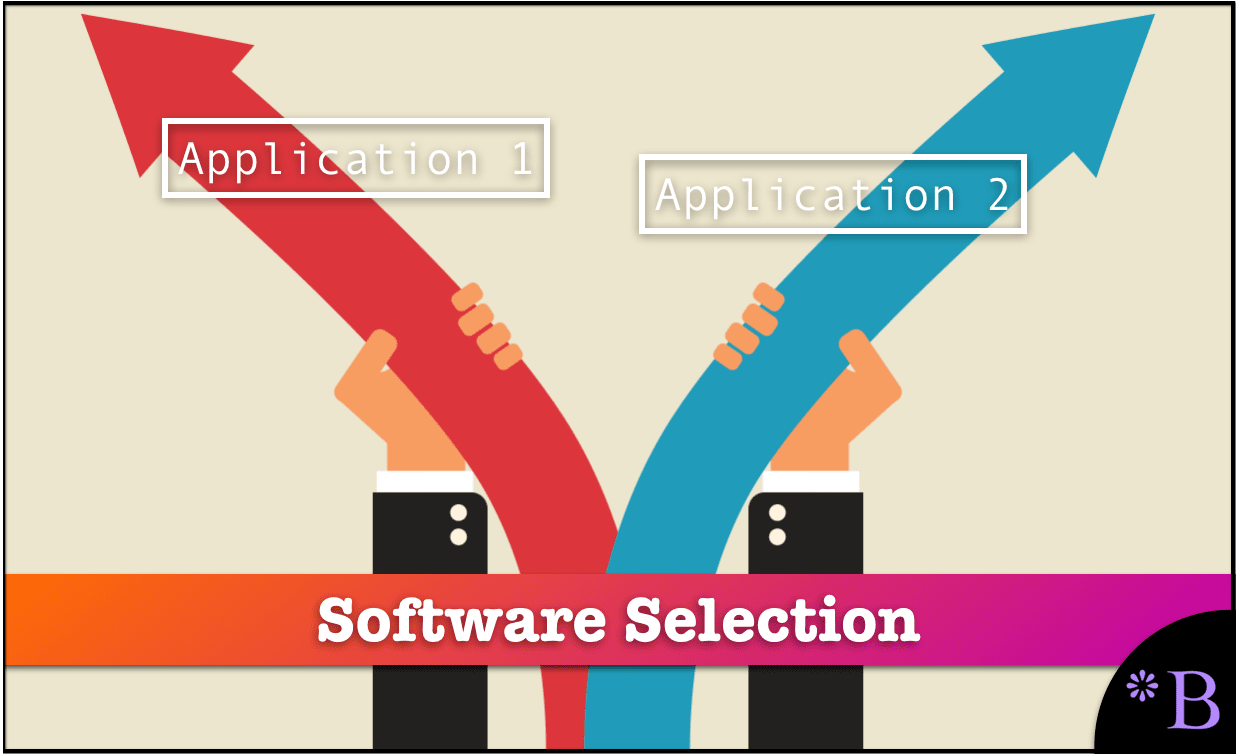
Enterprise Software Selection: How to Pinpoint the Perfect Software Solution Using Multiple Sources of Information
What the Book Covers
Essential reading for success in your next software selection and implementation.
Software selection is the most critical task in a software implementation project, as it is your best (if not only) opportunity to make sure that the right software—the software that matches the business requirements—is being implemented. Choosing the software that is the best fit clears the way for a successful implementation, yet software selection is often fraught with issues, and many companies do not end up with the best software for their needs. However, the process can be significantly simplified by addressing the information sources that influence software selection. This book can be used for any enterprise software selection, including ERP software selection.
This book is a how-to guide for improving the software selection process. It is formulated around the idea that—much like purchasing decisions for consumer products—the end user and those with the domain expertise must be included. In addition to providing hints for refining the software selection process, this book delves into the often-overlooked topic of how consulting and IT analyst firms influence the purchasing decision, and gives the reader an insider’s understanding of the enterprise software market.
This book is connected to several other SCM Focus Press books, including Enterprise Software TCO and The Real Story Behind ERP.
By reading this book, you will:
- Learn how to apply a scientific approach to the software selection process.
- Interpret vendor-supplied information to your best advantage. This is generally left out of books on software selection. However, consulting companies and IT analysts like Gartner have particular biases. Gartner is paid directly by software vendors — a fact they make every attempt not to disclose while consulting companies only recommend software for vendors that give them the consulting business. Consulting companies all have an enormous financial bias that prevents them from offering honest advice — and this is part of their business model.
- Understand what motivates a software vendor.
- Learn how the institutional structure and biases of consulting firms affect the advice they give you, and understand how to interpret information from consulting companies accurately.
- Make vendor demos work to your benefit.
- Know the right questions to ask on topics such as integration with existing software, cloud versus on-premise vendors, and client references.
- Differentiate what is important to know about software for improved “implement-ability” versus what the vendor thinks is important for improved “sell-ability.”
- Better manage your software selection projects to ensure smoother implementations.
Buy Now
Chapters
- Chapter 1: Introduction to Software Selection
- Chapter 2: Understanding the Enterprise Software Market
- Chapter 3: Software Sell-ability versus Implement-ability
- Chapter 4: How to Use Consulting Advice on Software Selection
- Chapter 5: How to Use the Reports of Analyst Firms Like Gartner
- Chapter 6: How to Use Information Provided by Vendors
- Chapter 7: How to Manage the Software Selection Process
Table of Contents
Chapter 1: Introduction to the Software Selection
- Books and Other Publications on Software Selection
- The Book’s Scientific Method Orientation
- My Background and the Book’s Focus and Orientation
- How Writing Bias Is Controlled at SCM Focus and SCM Focus Press
- The Approach to the Book
- The SCM Focus Site
- Intended Audience
- Abbreviations
Chapter 2: Understanding the Enterprise Software Market
- Background on the Enterprise Software Market
- The Most Important Thing to Take Away from the Enterprise Software Market
- Conclusion
Chapter 3: Software Sell-ability versus Implement-ability
- The Case Study of i2 Technologies
- Functionality Creep
- The Dynamic Nature of Software
- Adjusting the Software Selection Approach to be Focused on Implementation
- Making Realism a Priority
- Poor Software Selection as a Contributing Factor to the High Failure Rate of Enterprise Software Implementations
- Conclusion
Chapter 4: How to Use Consulting Advice on Software Selection
- The Institutional Structure of Consulting Firms
- Interpreting Information from Consulting Companies
- Finding Entities That Lack of Financial Bias
- Conclusion
Chapter 5: How to Use the Reports of Analyst Firms Like Gartner
- The Magic Quadrant Methodology
- The orientation of the Magic Quadrant Methodology
- Completeness of Vision Criterion
- Ability to Execute Criterion
- Gartner Report Adjustment Rules
- Never Use Just the Gartner Magic Quadrant to Make a Purchasing Decision
- Adjust the Rankings for the Vendor’s Size
- Insert More Reality into Gartner’s Ratings
- Adjust Down the Rate of Predicted Change
- When No Magic Quadrant Exists
- Adjusting for Functionality and Maintainability
- Disregarding Gartner’s Deeper Technology Insights and Predictions
- Adjusting for Price
- Adjusting for the Buying Company’s Size
- Conclusion
Chapter 6: How to Use Information Provided by Vendors
- Marketing Literature
- How to Read and Differentiate Vendor Marketing Literature
- The Demo
- The SAAS/Cloud Vendors versus On-premises Vendors for Long-term Software Evaluation
- Interpreting the Vendor-presented Story on Integration
- Client References
- Conclusion
Chapter 7: How to Manage the Software Selection Process
- The Different Roles of the Software Selection Team
- The Role of the Coordinator
- Implementing the Scientific Method in the Software Selection
- The Importance of Documentation in the Software Selection Process
- Tabulating the Scores for Each Vendor
- Making the Decision
- Moving from Selection to Vendor Negotiations
- Conclusion
Conclusion
Appendix A: How to Use Independent Consultants for Software Selection

Buy Now
Questions about the Book?
Do you have any questions about the book? If so, please leave us a comment in the message box to the right, and we will address them.